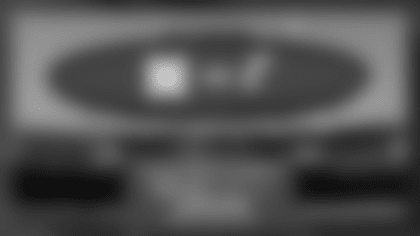This is the third installment in a continuing series of columns tracing Lamar Hunt's role in the marketing of the Kansas City Chiefs and situations and circumstances he faced in doing so.* *
The move to Kansas City following the Texans championship in 1962 must have been difficult for Lamar Hunt after all he had done and had hoped for in his hometown.

It was not cause for great celebration from his team for certain, particularly from a roster composed of players who were in many cases of Texas birth, something Hunt had wisely promoted given his team represented Dallas and football was a passion for most of the state's citizenry. All-pro defensive end Jerry Mays was so upset he considered retiring rather than make the move. Len Dawson, who had just joined the team the previous year, still made his home in Pittsburgh where he had played before Stram had lured him to Dallas. His coach, Hank Stram, cried leaving town, or so it was said.
While the Kansas City newspaper headlines proclaimed notice of the team's imminent arrival in "War-Ends-in-Europe"-sized type, the locals were less moved no matter how much their beloved mayor, H. Roe Bartle, wanted it for them. Perhaps it was wrapped up in thoughts of the lowly Athletics and how poor a standing they held among whatever sports-loving public existed in town after so many years of losing. Still, the city was getting a champion, even though it was from the AFL and not the better-known NFL. The roster was the youngest in pro football and the future looked bright.
Lamar Hunt, no matter his image as an eternal optimist, was very much a realist. Upon the team's move to Kansas City, he readily admitted in a letter to general manager Jack Steadman that "sales are going to be very few."
Nevertheless, he was convinced that the franchise's first year in Kansas City "presented a never-to-be-duplicated situation as far as ticket sales are concerned."
In Hunt's mind, there was a correlation between how many tickets the team sold and how many ticket holders it would retain for the future. He correctly believed "that people won't hold seats unless they feel they are scarce." That prophetic statement holds as much truth today as it did then.
Selling tickets might be easier with no competition from another football team, but he was from Texas, the hotbed of football, not Missouri, although he had even entertained an ill-thought idea of keeping the name, "Texans," because he believed the public equated Texas with all that was best in the game.
Hunt moved quickly to bring along many of the ideas he had first tried in Dallas, chief among them the recruitment of a passionate group of local businessmen and women who would come to form the Chiefs Club, with the more passionate among them becoming the foundation of what he came to call, Red Coaters. Their prize for selling a specific number of tickets: the right to wear the red coat, the opportunity to be associated with a winner, and to stand beside the man who owned the team and wore the red coat himself. In the early days, Hunt even moved to Kansas City temporarily to drive the ticket effort.

The Huddle Club also made its way north to Kansas City, as did the idea to play a pre-season game or scrimmage in a nearby town. The Chiefs staged a game in Wichita, Kansas in 1963.
He signed to produce a weekly half hour television show and arranged with radio to produce promotional spots.
The stadium in which they were to play was no prize, certainly not on the scale of Hunt's beloved Cotton Bowl. Municipal Stadium was built for baseball and the Athletics had first rights as far as scheduling games.
"I knew we needed to offer more than a team of unknown players," he wrote years later. "We were in show business and we needed to include the complete package."
Hunt went about dressing up the old place with colorful endzones – unique for their time – and a new, or what he referenced as, "a simplistic scoreboard to be located in the face of the right field wall that was visible to all of the stands." He went so far as to lay-out a seating plan and suggest pricing models.

In place of the Tex-Anns, a cheering squad composed of 20 area high school and college males and females was added. Hunt was one of the first to introduce the concept of tumbling to the ranks of cheerleading teams. (Later, his "Tumbling Tornado" comprised of 16 high school students from Texas who performed at his Dallas Tornado home soccer matches set new standards for the activity.) The idea of co-ed cheerleading squads remained a part of Chiefs game days until well into the 1990s.

This was a time where big bands still held some interest and in Tony DiPardo Hunt had one of the most recognized in any city. The 15-piece Zing band provided a warm-up 30 minutes prior to game time and was located in the northwest corner of the stadium.
A horse named "Warpaint" was quickly introduced and soon became part of the stadium's pre-game festivities. Located along the sideline was a large eight-foot drum sponsored by the B.C. Christopher Company, which cheerleaders pounded on throughout each contest.
Once again, he was adamant in how his team was to be introduced. Using the procedure he had enacted before in Dallas, he ran head-on into television's preferences for how it wanted the players to enter the field. Hunt stood firm; it would be his way. Players would remain unseen until the time of their announcement and enter from the baseball dugout.

Hunt was always one to spot trends, or opportunities to build fan loyalty – something that would make the experience at the stadium special, engage people to feel they had a part in whatever went on there.
After one Chiefs victory, he noticed that a section right behind the home bench had become particularly boisterous during games. A headline in the next day's newspaper titled, "Wolves Wail…" gave him an idea. The following year's ticket campaign prodded fans to "Join the Wolfpack." Many years later, Hunt would look to christen one corner of the Arrowhead endzone, "Hallelujah Corner" in light of all the game-saving touchdowns the team had scored in unbelievable come-back victories. While it never truly caught on as the Wolfpack did, it clearly showed that Hunt was always thinking.

Hunt had brought his team to Kansas City with the promise that the city would sell 25,000 tickets. Then began an intense 90-day campaign by local businessman Ray Evans, who chaired the drive at the request of Mayor Bartle, to guarantee the Texans would come.
Following hundreds of speeches, breakfast presentations, and calls on top businesses, Evans could brag that his people had secured 13,500 tickets which, by today's figures, seems tiny but then would have been the envy of any city. Minneapolis, by comparison, and a member of the NFL, took two years to sell 26,000 season tickets.
When the campaign ended, Evans and his cohorts could point to the fact that they had topped the ticket sales of 13 other clubs for all of 1963 with a total of 15,182 in season sales.
But as was the case with Dallas, the fans were late to catch on to many of Hunt's ideas and, coupled with the team's losses, rumors had begun to persist by 1965 that team officials may be wearying of the disappointing crowds – the next two years showed decreases in season sales to 10,106 in 1964 and 9,559 in 1965 – and was contemplating another move.
Next time: Lamar Hunt: Winning cures all













